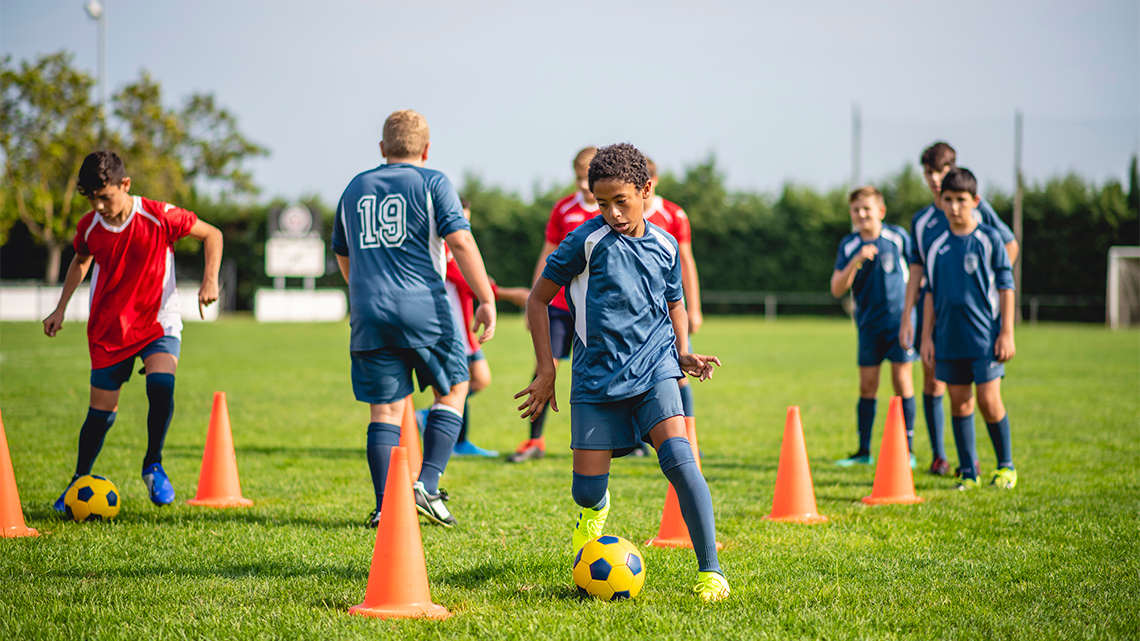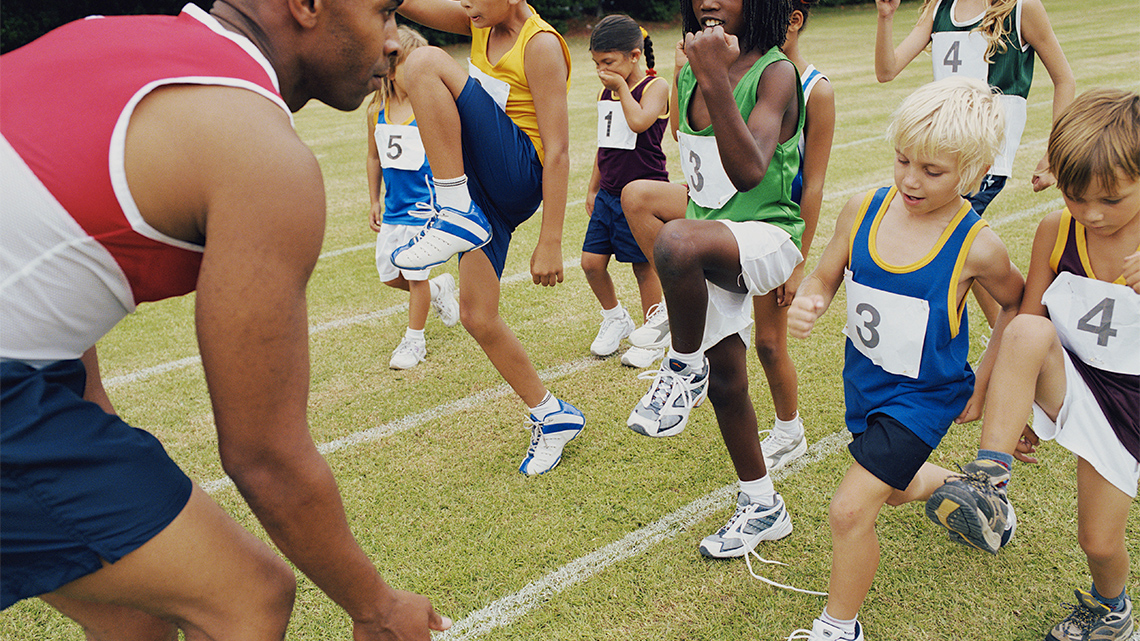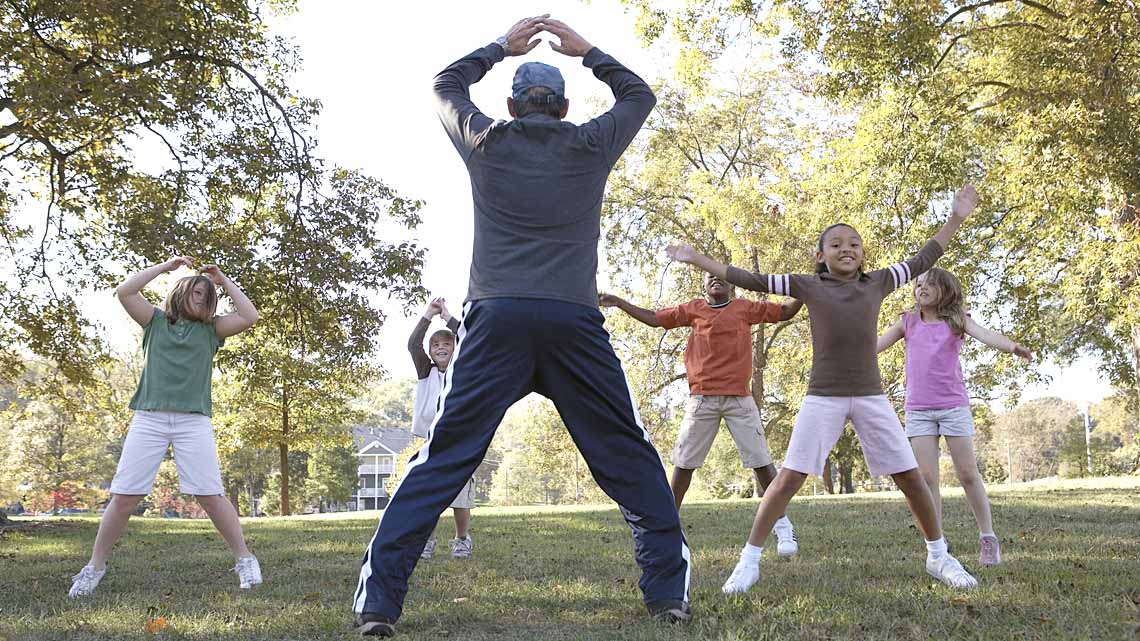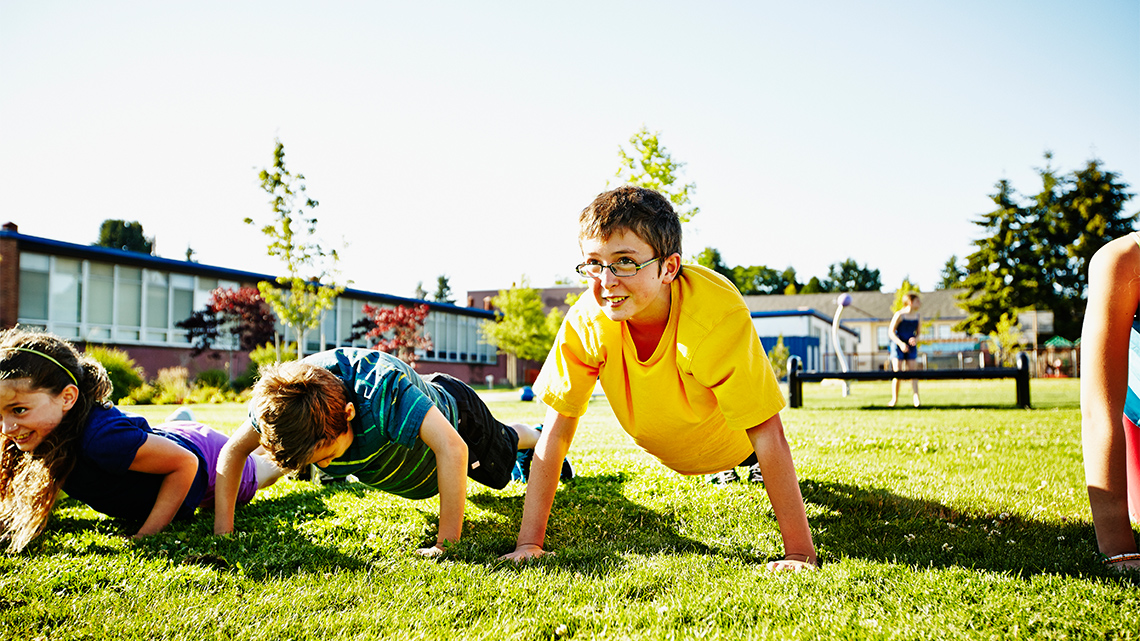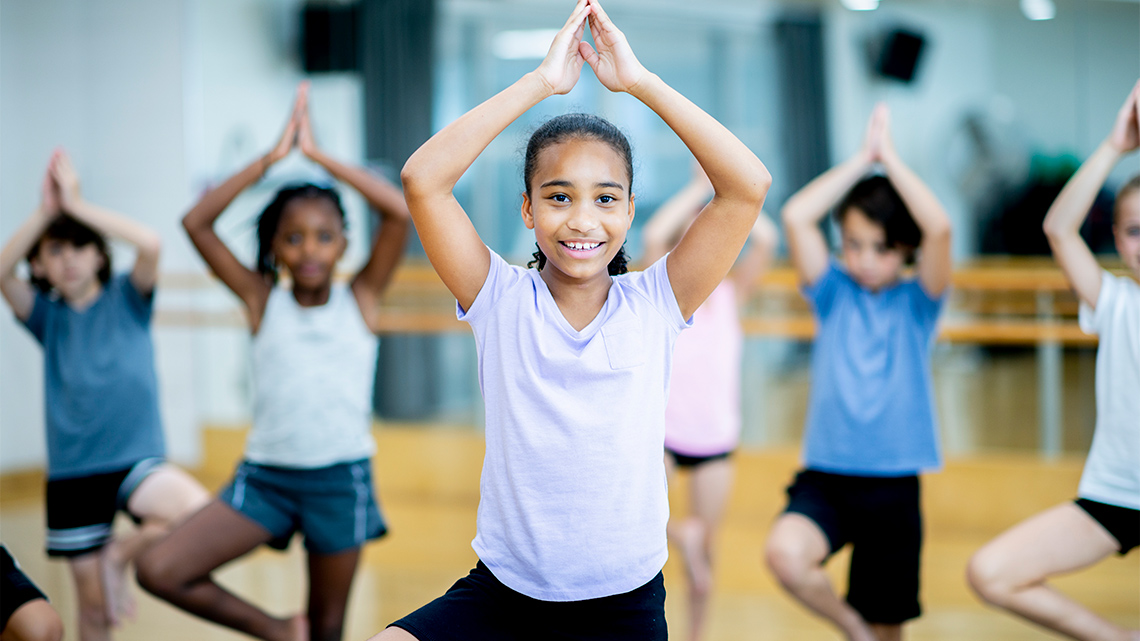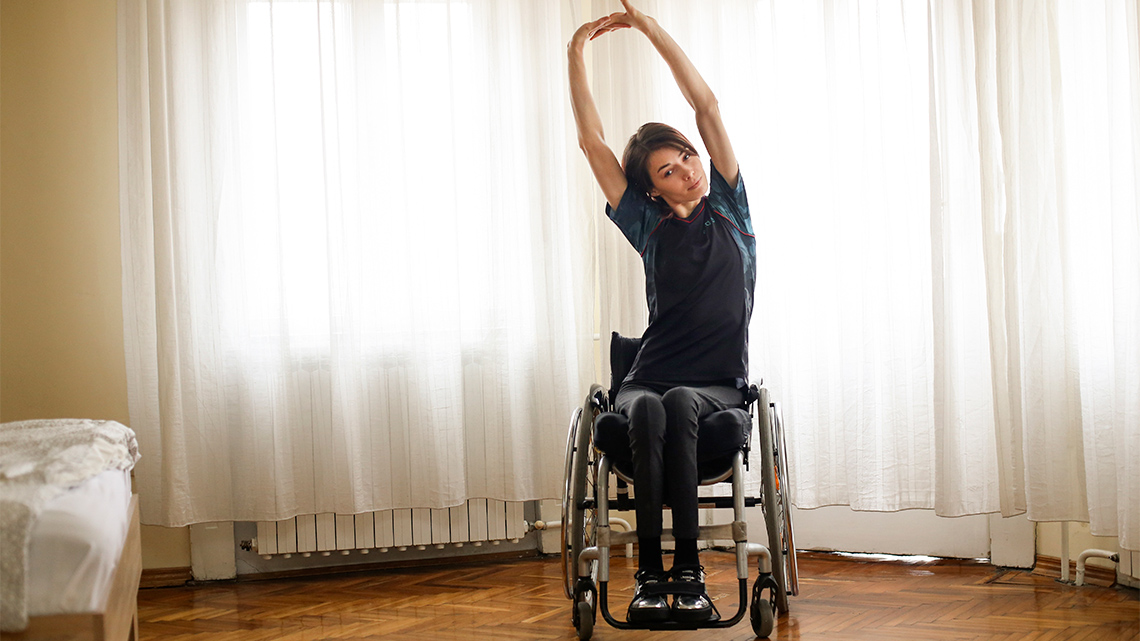Minds On
Let’s get moving!

What’s a warm-up?
Before beginning any physical activity, complete a warm-up.
A warm-up can include very light movement activity followed by some stretching to loosen up your muscles and joints before a physical activity.
TVO personalities Lucas and Laura, along with Teacher Deniece are ready to guide you through a superhero themed warm-up.
Access the following video entitled ‘Power Up: Superhero 4’ and follow along for a quick full-body warm-up.
Why do you think performing a warm-up before physical activity is important? Record your thoughts using any method of your choice or in the following fillable chart.
Complete the Why Warm-Up? organizer in your notebook or using the following fillable and printable document. If you would like, you can use speech-to-text or audio recording tools to record your thoughts.
|
Why should you perform a warm-up before physical activity? Record some of your thoughts in the following bullet points: |
|
|
Press the ‘Activity’ button to access Why Warm-Up?
Performing warm-up activities before any physical activity has the following benefits:
- can make you feel good and more energized
- lowers the risk of injury
- increases flexibility
- increases your joints range of motion
- can cause less muscle tension and pain after your activity is finished
Also, remember to cool down after exercising. This gives your muscles a chance to relax and allows your heart to get back to a resting heart rate.
Action
What are other warm-up benefits?
A warm-up is the act of preparing for a physical activity by mildly exercising and stretching for a short time period beforehand.
People use warm-up activities to prepare themselves both physically and psychologically, for more vigorous activity.
When you warm up it should be with some easy aerobic activities that will gradually elevate your heart rate. Keep in mind that all activities should be simple and movements should be specific to the major joints of your body (neck, shoulders, trunk, hip, knee and ankle) through their range of motion.
A warm-up can even be the activity you are about to do but at a slower pace. For example, if you’re about to go for a run, warm up with walking or a light jog. If you are going to go for a swim, do a couple of slow warm-up laps. If you play a sport, focus on the muscles that are used for your particular sport. For instance, if you play baseball, you might warm up your shoulder with light throwing.
Explore the following bullet points that are some other simple warm-up activity examples:
- March on the spot or around the room or outdoors. Lift your knees high and perform a variety of arm actions while marching.
- Jogging on the spot or around the room or outdoors. Start with a slow pace, then go a bit faster, and even try to touch your heels to hands behind your back.
- Lift your knees high in front of you, one at a time.
- Jump up and down with your feet together. Try making some 2-dimensional shapes when jumping.
- Do arm circles by extending your arms and draw large or small circles in the air with your hands.
When you finish your physical activity or sport, it is always important to do a cool down activity.
What is a cool-down session?
A cool-down session is the exact opposite of the warm-up session which was to increase the heart rate and warm the muscles. The cool down session aims to gradually decrease the heart rate and relax the muscles.
Cool-down activities focus on slow movements and stretching, allowing the heart rate to return to normal after vigorous activity.
People usually use full body stretches to work on improved flexibility.
Stretching should never hurt. If you have reached a point in your stretch where it hurts, pull back to where you still feel a stretch but can hold the stretch comfortably.
A stretch is usually held for 15-30 seconds. This is then repeated 2–4 times.
Remember to breathe. Do not hold your breath when you stretch. Inhale slowly and relax into the stretch as you breathe out.
Remember, a cool-down routine is 5–10 minute routine of gentle movement, like a brisk walk, and static stretching to help your body recover from your physical activity.
Explore the following images to learn about a range of cool-down activities.
Consolidation
Activity-specific warm-ups and cool-downs
Choose your favourite physical activity or sport. It could be running, wheelchair basketball, floor hockey or any other activity of your choice.
Thinking of the activity, you are going to create a specific warm-up and cool-down for the physical activity or sport.
Think about the movement of the activity or sport and try to warm-up those muscle groups.
Afterwards, create a nice calming cool-down to allow your heart rate to return to normal after the moderate to vigorous activity.
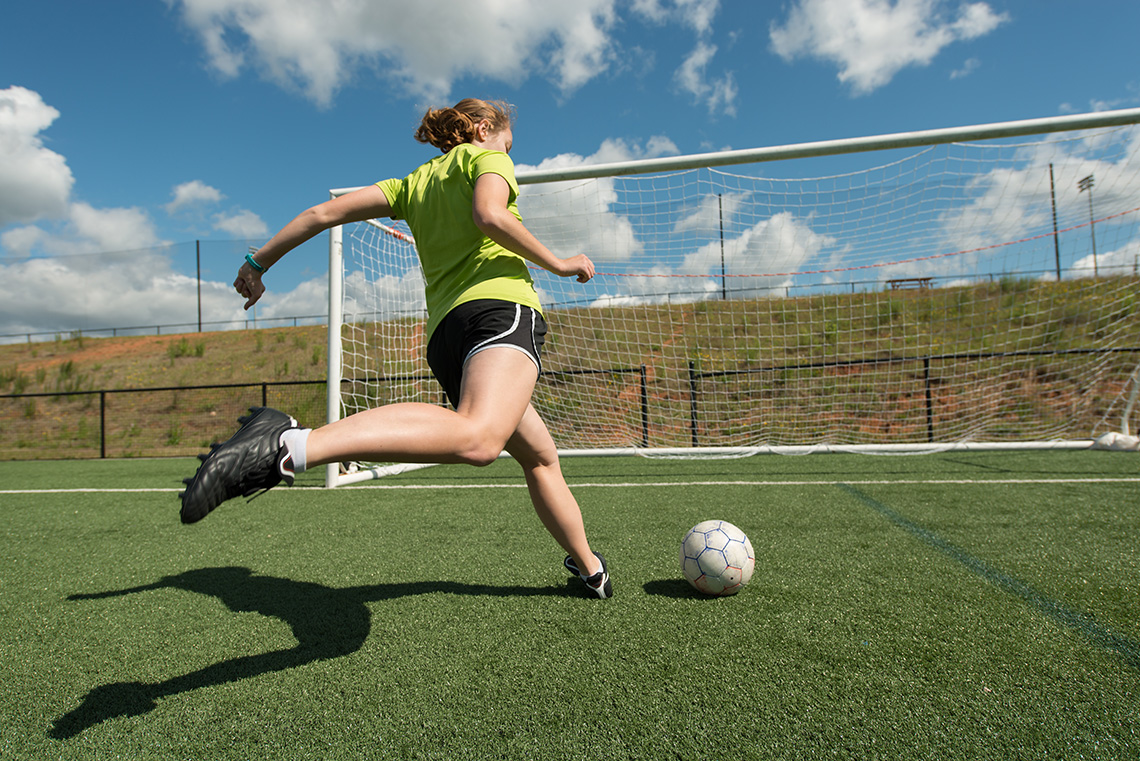
What warm-up and cool-down exercises would you choose for a soccer player?
Your warm-up should be a total of 5 minutes and include the following:
- 3-5 exercises that will gradually increase your heart rate
- You must be able to demonstrate and explain each exercise.
Your cool-down should be a total of 5 minutes and include the following:
- 1 gentle aerobic movement to lower your heart rate
- 5 static stretches that target different muscle groups
- You must be able to demonstrate and explain all static stretches.
Have fun! If possible, share your warm-up and cooldown with a friend!
Reflection
As you read through these descriptions, which sentence best describes how you are feeling about your understanding of this learning activity? Press the button that is beside this sentence.
I feel…
Now, record your ideas using a voice recorder, speech-to-text, or writing tool.
